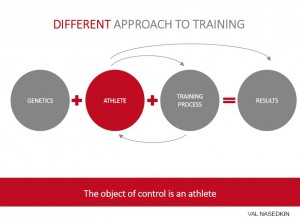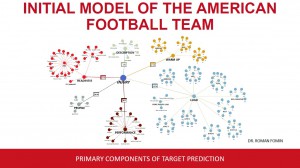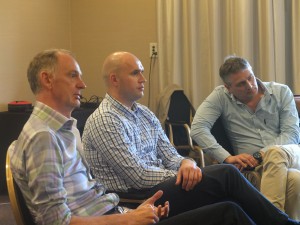Pff, yes, the timing wasn’t great and the preparation time was short, but I think we pulled of a great seminar. We wanted to keep it small 20-25 persons, but in the end almost 60 people showed up, despite the summer and the fact it was during the week.
People from the Canada, UK, Germany, Austria, Belgium and as far as Novosibirsk deep into the heart of Siberia, and Holland, of course.
Not only that, but I think we took the first solid steps towards looking at training differently. It was my turn to explain the new trend, the history and the differences in the classical methodology of training vs. the new methodology of training.
It’s not that the classical methodology was so bad, but I think we could do so much better by looking at training from different perspectives than before.
Information in the biomedical field is exploding, but very little of that knowledge actually trickles down to the pitch, the track or the pool. Many coaches got stuck with concepts that need revision, with outdated models and old fashioned methods. Especially in elite sports where the margins between success and failure are getting smaller all the time and where the competition is getting stronger, innovative ideas and new methods might give coaches, athletes or clubs the winning edge.

Val Nasedkin spoke about a new methodology of training, starting from the idea that instead of getting feedback from the training process, we should get feedback from the athlete and then adjust the training process accordingly. The feedback from the athlete is leading whereas in the classical methodology the feedback from the training process was leading, without taking the individual characteristics into consideration.

Dr. Roman Fomin, showed us the possibility of a new way of data processing, taking enough relevant data from individual athletes or teams, and processing these data with algorithms and software based on probability principles, neural networks, Bayesian networks, etc. This allows the processing of lots of data but in a very flexible way to see patterns and relationships that could not be seen with classical linear statistical processing. This allows us coaches to monitor the complexity of the training process and most important, to specifically improve the significant and relevant parameters, just because they are known now.

Instead of trial and error we are able to build individual or team based “highways” to targeted performances and we can predict what happens when one deviates from this “highway”. We are now also able to predict injury probability, team performance and team success. This sounds like “voodoo” at first but when one understands the principles one can see the foundations of reality.

All of these might seem marginal or insignificant improvements at first but it has been proven or confirmed by solid results and improvements of athletes and team performances.
We plan to host more of these seminars in the future, maybe twice a year. And the next time also with more practical applications, more practical examples, hands-on work and exercises.
After a few posts with a more philosophical tone it’s time to get back on earth and write some more about our work in the field.
